- What We Do
- Agriculture and Food Security
- Democracy, Human Rights and Governance
- Economic Growth and Trade
- Education
- Environment and Global Climate Change
- Gender Equality and Women's Empowerment
- Global Health
- Humanitarian Assistance
- Transformation at USAID
- Water and Sanitation
- Working in Crises and Conflict
- U.S. Global Development Lab
Speeches Shim
Partnerships are critical to reaching sustainable control of the HIV/AIDS epidemic. Take a look below to read more about the Office of HIV/AIDS' projects and implementing partners.
OHA's Projects
 |
The overarching purpose of the 4Children project, implemented by Catholic Relief Services, is to improve health and well-being outcomes for orphans and vulnerable children (OVC) affected by HIV and AIDS and other adversities. |
 |
Accelerating Strategies for Practical Innovation & Research in Economic Strengthening (ASPIRES), implemented by FHI 360, supports gender-sensitive programming, research, and learning to improve the economic security of highly vulnerable individuals, families and children affected by HIV and AIDS, as well as key populations at higher risk. |
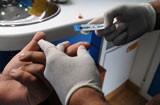 |
Advancing the Microbicide Pipeline, implemented by FHI 360, advances promising ARV-based microbicides through preclinical and early/mid-stage clinical testing. |
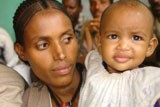 |
AIDSFree, implemented by John Snow, Inc., aims to improve the quality and effectiveness of high-impact, evidence-based HIV and AIDS interventions such as prevention of mother-to-child transmission, voluntary medical male circumcision, condom promotion, HIV testing and counseling (HTC) as a gateway to care and treatment, and other emerging approaches in order to meet country-specific goals and objectives globally. |
 |
Bringing People into Care, or Thol'impilo, implemented by the Arum Insititute, assigns HIV-positive patients of HTC to one of four arms of this care: point-of-care (POC) CD4 testing, POC CD4 testing and care facilitation/case management, POC CD4 testing and transport assistance, or standard of care. Each arm addresses key barriers to timely initiation of antiretroviral (ART) such as health perspectives, personal barriers and structural barriers. |
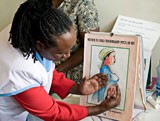 |
The goal of the CONRAD Proprietary Product Research and Development Program, implemented by CONRAD, is to improve reproductive health in developing countries by reducing HIV transmission through the development of new, safe and effective microbicides. |
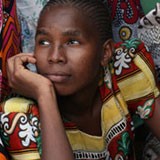 |
Dapivirine Ring Microbicide Licensure Program, implemented by the International Partnership for Microbicides, works to successfully obtain regulatory approval for the monthly dapivirine vaginal ring from the Medicines Control Council in South Africa and as broadly as possible from other National Regulatory Authorities in Africa and other regions of the world with significant HIV epidemics. |
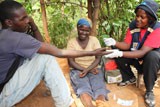 |
The contract with CONRAD, Development of Novel On-Demand and Longer Acting Microbicide Product Leads, is to develop new on-demand and longer-acting microbicide products that can reach or be ready for clinical testing within the timeframe of its contractual agreement with the U.S. Agency for International Development (USAID) and that can meet the criteria of being more potent, acceptable, discreet and longer- and broader-acting in order to improve adherence and effectiveness. |
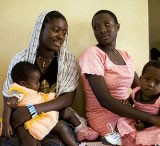 |
Engage4Health, implemented by ICAP at Columbia University, is a site-randomized study in Mozambique that will compare the effectiveness of a combination of interventions, versus the current standard of care, on linkage and retention of newly diagnosed HIV patients. Patients will be followed from initial testing to retention in care one year later. |
 |
The Evaluation of the National South African Female Condom Program, implemented by the University of Witwatersrand, aims to strengthen the program through identification of strategies that are most likely to enhance female condom acceptability, effectiveness and efficiency, enabling evidence-based adaptation for program scale-up. |
 |
Expenditure Analysis Technical Assistance to Partners (EATAP), implemented by the Futures Institute, assists select countries with PEPFAR expenditure analysis, reporting, and documents lessons learned from the implementation of the Expenditure Analysis Initiative. |
 |
Implementation Science Annual Program Statement (IS APS): HIV Prevention 2.0, implemented by the Center for Public Health and Human Rights, John Hopkins University, will measure impacts of a scalable package of integrated stigma-mitigating interventions for key populations, including men who have sex with men and female sex workers. |
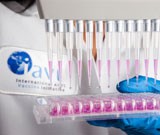 |
The International AIDS Vaccine Initiative (IAVI) accelerates the development of an effective vaccine for HIV prevention. |
 |
The Joint U.N. Programme on HIV/AIDS (UNAIDS) III Grant seeks to expand UNAIDS' response to the global HIV epidemic by supporting its 2011–2015 strategy, which aims to advance global progress in achieving targets for universal access to HIV prevention, treatment, care and support. |
 |
LINKAGES aims to accelerate the ability of partner governments, key population-led civil society organizations and private-sector providers to plan, deliver and optimize comprehensive HIV prevention, care and treatment services to reduce HIV transmission among key populations and help those who are HIV-positive live longer. |
 |
Livelihood and Food Security Technical Assistance II (LIFT II), implemented by FHI 360, provides technical assistance to design and integrate economic strengthening, livelihood and food security interventions within HIV and AIDS and other health programming. |
 |
MEASURE Evaluation Phase IV's objective, implemented by University of North Carolina Chapel Hill, is to enable countries to strengthen their systems in order to generate high quality health information that can be used for decision-making at local, national, and global levels. In this phase of the project, an increased emphasis will be placed on strengthening the collection, analysis and use of routine health information and on increasing local capacity for implementation of rigorous evaluation, including impact evaluation. |
 |
Media Messages and Mobilization, implemented by AVAC, is designed to create an informed, favorable and accurate media environment for microbicide research, and for accelerated introduction of microbicides, through ongoing support to media professionals and the broad array of stakeholders who play a role in research, preparedness and implementation efforts. |
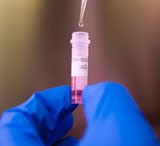 |
Microbicides Access and Introduction Stakeholder Group, implemented by AVAC, supports USAID's efforts to generate thoughtful, informed input that enables microbicide research and speeds the process of preparing for product introduction. |
 |
Microbicides Adherence Measurement and Optimization, implemented by FHI 360, creates a coherent, validated and feasible adherence measurement and support package for use in ARV-based vaginal ring trials. |
 |
Phase III Microbicide Clinical Trial for Tenofovir Gel, implemented by CONRAD and Eastern Virginia Medical School, has two set two objectives: (1) to complete clinical and regulatory activities required for licensure of tenofovir 1 percent gel for the prevention of vaginal HIV acquisition in women and (2) to provide information about its implementation in African populations. |
 |
The Randomized Evaluation of HIV/FP Service Models Program (REacH), implemented by Society for Family Health Zambia, is a randomized controlled trial that compares the incremental costs and health service utilization of two models of family planning and HIV service linkage and integration: a comprehensive provider-initiated referral model with client follow-up and integrated-services model. |
 |
The Safe Generations (Situkulwane Lesiphephile) Study, implemented by ICAP at Columbia University, will evaluate the feasibility and cost-effectiveness of providing all HIV-positive pregnant women with lifelong triple ARV therapy, regardless of CD4 count (Option B+) in the Kingdom of Swaziland. |
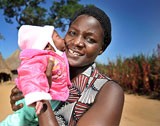 |
SEARCH GBV, or Tathmini GBV, implemented by the Futures Group, aims to evaluate the effectiveness of gender-based violence prevention and response interventions in the Mbeya region of Tanzania. |
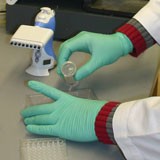 |
The goal of Supporting Operational AIDS Research (Project SOAR), implemented by the Population Council, is to improve the quality and impact of HIV and AIDS program outcomes by strengthening operations research and evaluation activities. The project also works to build capacity and ensure maximum data dissemination and utilization of its findings. |
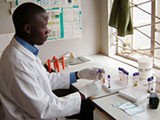 |
Thin-Film Polymer Device for Microbicide Delivery, implemented by RTI International, develops a novel microbicide sustained-release delivery system in the form of a subcutaneously injected and biodegradable thin-film polymer device that improves on the effectiveness, acceptability, usage, and accessibility of existing microbicide delivery systems. |
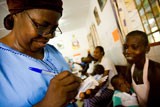 |
Validation of Objective Measures of Product Adherence for Microbicide Trials, implemented by CONRAD and Eastern Virginia Medical School, develops a composite, sensitive, and robust panel of biomarkers that objectively measures vaginal/rectal insertion of product, semen exposure and drug/placebo delivery at the mucosa to permit a rational interpretation of microbicide results. |
 |
YouthPower is a USAID Agency‐wide project to strengthen local, national, and global youth systems and programs to achieve sustainable, positive youth outcomes in health, education, and political and economic empowerment, and to increase youth engagement in development efforts. |
Archive
Below is a list of past Office of HIV/AIDS projects and implementing partners.
 |
The objective of Advocacy in Action, implemented by AVAC, is to develop multi-stakeholder advocacy coalitions to plan and execute advocacy strategies facilitating microbicide research and accelerated access. |
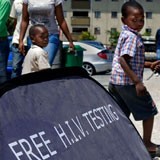 |
The Grant Management Solutions 2 (GMS) Project, implemented by Management Sciences for Health, provides technical assistance to improve the functioning of Global Fund grants to fight AIDS, tuberculosis, and malaria. The aim of GMS is to improve the functioning of Global Fund grants and thereby increase the effectiveness and efficiency of prevention, care and treatment interventions in HIV/AIDS. |
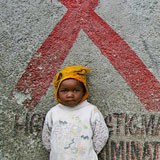 |
HIVCore, implemented by the Population Council, conducts operations research and evaluations and promotes the use of evaluation results, while building local capacity. |
 |
Impact Evaluation of SILC on Child Household Well-being [PDF, 592KB], implemented by the Futures Group, will examine the impact of a community savings model, known as saving and internal lending communities (SILC) on child and household well-being in Zambia. |
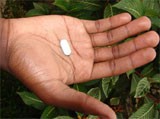 |
Implementation Science Annual Program Statement (IS APS): The Partners Demonstration Project, implemented by the University of Washington, is an open-label, pilot demonstration and evaluation project of antiretroviral-based HIV-1 prevention among high-risk HIV-1 serodiscordant African couples. |
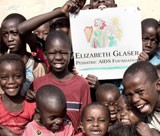 |
The Kabeho Study, implemented by the Elizabeth Glaser Pediatric AIDS Foundation, will examine the effectiveness and feasibility of universal ART for HIV-positive pregnant women and couples with infant feeding counseling and food support on 18-month HIV-free survival of HIV-exposed children in Kigali, Rwanda. |
 |
The Preventive Technologies Agreement (PTA), implemented by FHI 360, develops, evaluates and introduces a range of safe, effective and acceptable HIV and AIDS prevention and reproductive health technologies. |
 |
The Start TB Patients on ART and Retain on Treatment (START) study, implemented by ICAP at Columbia University, looks to evaluate the following: the cost-effectiveness and acceptability of a combination of interventions to improve early ART initiation and retention during tuberculosis (TB) treatment; and TB treatment success among HIV-infected TB patients in Lesotho. |
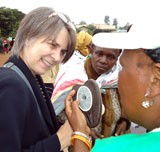 |
The Strengthening Team to Achieve Results (STAR) Project, implemented by the Training Resources Group, uses organizational development methodologies to accelerate the performance and impact of U.S. Agencies and USAID country teams at the mission level implementing PEPFAR programs. |
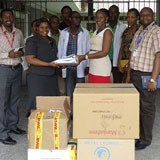 |
The Supply Chain Management System (SCMS), implemented by the Partnership for Supply Chain Management, ensures uninterrupted supply of quality health commodities to people impacted by HIV and AIDS and promotes sustainable supply chains in partner countries. |
USAID is a proud implementer of the U.S. President's Emergency Plan for AIDS Relief.

Comment
Make a general inquiry or suggest an improvement.